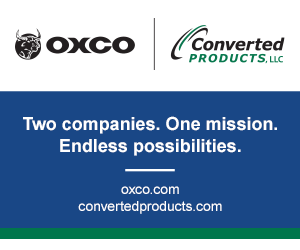UV Protection of Hot Melt Adhesives for Packaging Applications
- Published: November 01, 2000, By Neal J. Earhart, Ciba Specialty Chemicals Corp., Tarrytown, NY
Email the author at neal.earhart@cibsc.com
Application: Light stabilizers can improve the resistance of hot melt adhesives to UV light induced degradation in packaging applications.
Antioxidants such as hindered phenols, thioesters, and phosphites have common use in hot melt adhesive formulations. They inhibit the detrimental effects of oxidation on the hydrocarbon components from high temperatures during compounding and processing. During its lifetime, a hot melt adhesive can receive exposure to ultraviolet (UV) light during storage, on a display shelf, and during final use.
A typical packaging application utilizing a hot melt adhesive: a clear, rigid container that can receive exposure to UV light. This light can pass through the backing of a label or tape, strike the edges of an adhesive layer in a label or tape, or pass through the container and strike the adhesive layer directly. UV light-induced oxidation and subsequent degradation of a hot melt adhesive cause loss of adhesive properties such as tack, adhesive or cohesive strength, and discoloration. Loss of adhesive properties can result in a label or tape easily peeling from a container or package. The label or tape may prematurely fall off the substrate, or the constructed product may simply fall apart. A discolored adhesive may retain its physical properties, but the discoloration can be cosmetically unattractive and imply that the product is inferior or has been on the shelf for an excessive time.
Protection Strategies
Pressure sensitive labels and tapes have use in many packaging applications. Many materials are available for both the backing and adhesive depending on the final requirements. The backing can consist of paper, polymer films, paper laminates, foil, or fabrics. The adhesive layer can be a pressure sensitive adhesive selected from many different types at coating weights of 2-12 mils. Three basic approaches can protect an adhesive used in a label or tape from UV light: (1) inhibit UV light from passing through the backing, (2) incorporate a light stabilization system into the adhesive formulation, and (3) combine both methods.
Performance requirements, cost parameters, or appearance of a label or tape dictate the selection of an adhesive backing material. The backing can use a material that does not transmit UV light due to its opacity, chemistry, or thickness. This approach may not be technically feasible due to performance requirements of the application. Another option is to add a UV screener such as carbon black, titanium dioxide, pigments, or fillers to the backing. The screener can inhibit the UV light from penetrating the backing. A UV absorber such as a benzotriazole or benzophenone can also be a part of the backing in addition to a UV screener. Using the backing material neat or containing screeners or UV absorber to block UV light can effectively protect the adhesive layer. The edges of the adhesive still remain exposed and may discolor and begin to peel from the substrate.
Another strategy is to formulate a light stabilization system directly into the hot melt adhesive. This approach protects the adhesive from UV light regardless of the point of contact. The use of hindered amine light stabilizers is extremely effective. They can quench the radical reactions initiated by UV light and prevent degradation of an adhesive. Using a UV absorber with hindered amine light stabilizers may provide a performance advantage. UV absorber alone may not provide adequate protection of the adhesive layer due to competition at the adhesive surface for the incident UV light. Using a light stabilized adhesive also lifts the burden for UV protection from the backing material to allow for a larger palette of backing materials. In applications using a light-sensitive adhesive or requiring critical performance demands, a combination of approaches to UV protection may be useful.
Conclusion
Antioxidants are necessary in hot melt adhesive formulations. They provide protection against thermally induced oxidation that can prematurely age the adhesive. In many applications, a hot melt adhesive can receive exposure to direct or indirect UV light. The appropriate use of a light stabilization system can inhibit UV induced reactions that negatively effect the adhesive, increase the service life of the adhesive, and improve the total appearance of an adhesive and a label, tape, or package.












